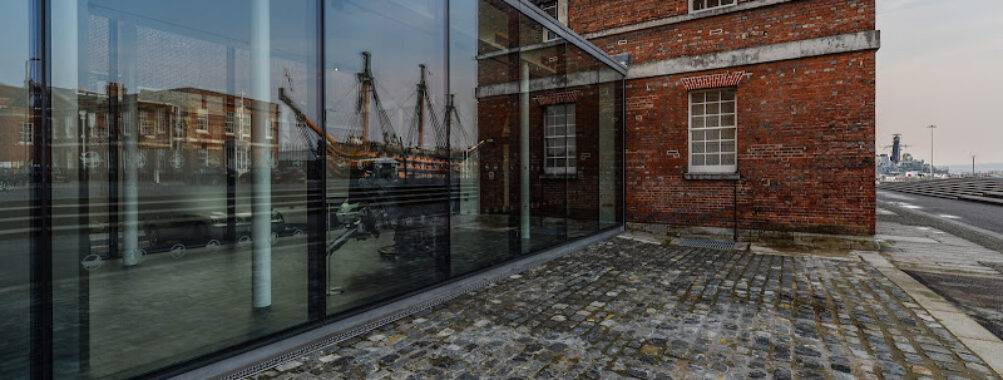
National Museum of the Royal Navy
Table of Contents
Description
The National Museum of the Royal Navy stands as a testament to Britain’s incredible maritime legacy. As a former naval officer myself, I can tell you this isn’t your average dusty museum – it’s a living, breathing celebration of our nation’s seafaring spirit. The museum absolutely excels at bringing naval history to life through its remarkable collection of artifacts and interactive exhibits.
The real showstopper here is the extensive collection dedicated to Admiral Lord Nelson. I remember being completely blown away by the personal items and compelling stories that paint such a vivid picture of Britain’s most famous naval hero. The museum does an exceptional job of balancing the historical significance with engaging storytelling that keeps visitors of all ages interested.
Key Features
• State-of-the-art helicopter simulator that lets you experience what it’s like to pilot a military chopper (Pro tip: Book this in advance – it’s usually packed!)
• Extensive collection of naval artifacts spanning several centuries
• Interactive exhibits showcasing naval warfare evolution
• Comprehensive Lord Nelson collection featuring personal effects and battle artifacts
• Children’s discovery area with hands-on learning activities
• Historic naval vessels you can actually explore
• Maritime archaeology exhibits
• Cutting-edge multimedia displays
• Traditional naval artifacts and weaponry
• Temporary exhibitions that rotate throughout the year
Best Time to Visit
I’ve visited during various seasons, and I’d say weekday mornings are your best bet for a peaceful experience. The museum tends to get busier after 1 PM, especially during school holidays. Summer months naturally draw larger crowds, but the air-conditioned interior keeps things comfortable.
If you’re bringing kids (and you should – they’ll love it!), try planning your visit during term-time weekdays. Winter months offer a more relaxed atmosphere, and you’ll have more time to really dive into the exhibits without feeling rushed. The museum’s indoor nature makes it a perfect rainy-day activity, which, let’s face it, isn’t uncommon in Britain!
How to Get There
Getting to the museum is pretty straightforward. If you’re coming by train, the nearest station is just a short walk away. Regular bus services stop nearby – I usually catch the harbor bus when visiting, which adds a nice maritime touch to the journey!
For those driving, there’s a paid parking lot right at the museum. But here’s a money-saving tip from a regular visitor: there are several public car parks within walking distance that often charge less. Just remember to wear comfortable shoes – you’ll be doing plenty of walking inside anyway.
Tips for Visiting
Look, I’ve been here more times than I can count, and I’ve learned a few tricks along the way. First off, grab your tickets online before you go – it’ll save you both time and money. The queue can get pretty long, especially during peak times.
Pack light – there are lockers available, but why bother? The cafe serves decent food (try their naval-themed pastries!), but if you’re watching your budget, there are plenty of spots nearby for a quick bite.
Give yourself at least 3-4 hours to explore properly. Trust me, you’ll need it. The helicopter simulator is awesome, but book it when you first arrive – slots fill up fast. Oh, and don’t skip the temporary exhibitions – they’re usually fascinating and change regularly.
If you’ve got kids with you, grab an activity pack from the front desk – it’ll keep them engaged throughout the visit. And definitely check out the discovery area – my niece spent hours there last time!
The museum shop is actually worth a visit (and I’m usually the first to skip gift shops). They’ve got some unique maritime-themed items that make great souvenirs or gifts. Just remember to keep an eye on your wallet – it’s easy to get carried away!
Photography is allowed in most areas, but do check with staff about flash photography in certain sections. Some of the artifacts are pretty sensitive to light. And don’t forget to wear comfortable shoes – the floors can be quite hard on your feet after a few hours of exploring.
Lastly, if you’re really into naval history like me, consider becoming a member. The annual pass pays for itself if you visit more than twice, plus you get special access to certain events and exhibitions. And between you and me, the members’ events are pretty spectacular – nothing quite like sipping wine while learning about historic naval battles!
Location
Find and Book a Tour
Explore More Travel Guides
No reviews found! Be the first to review!